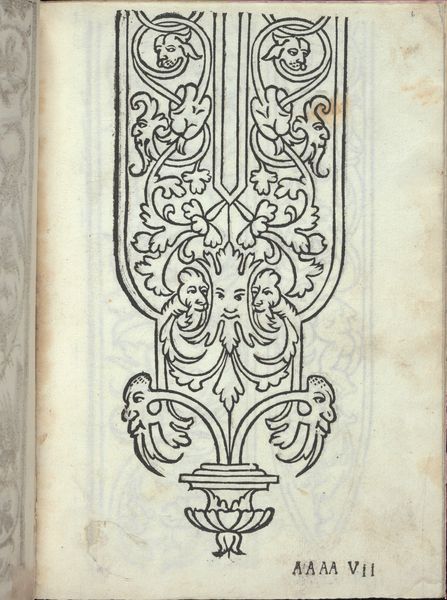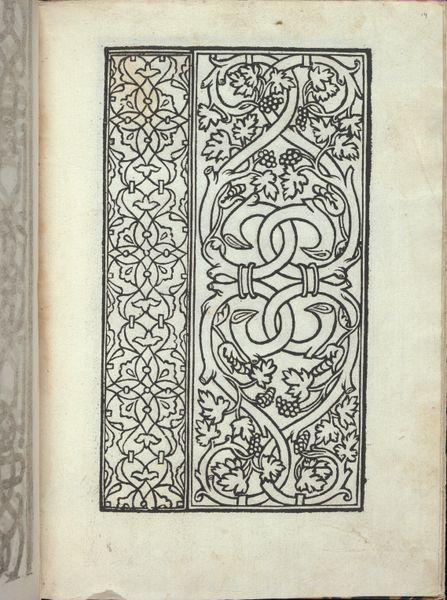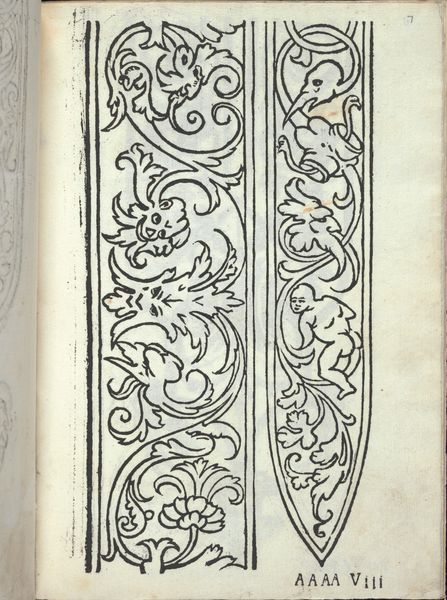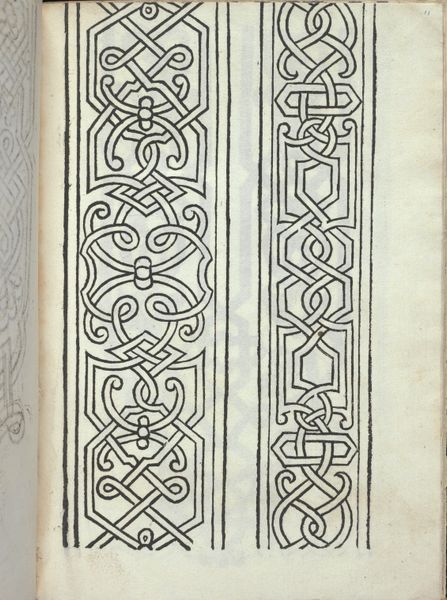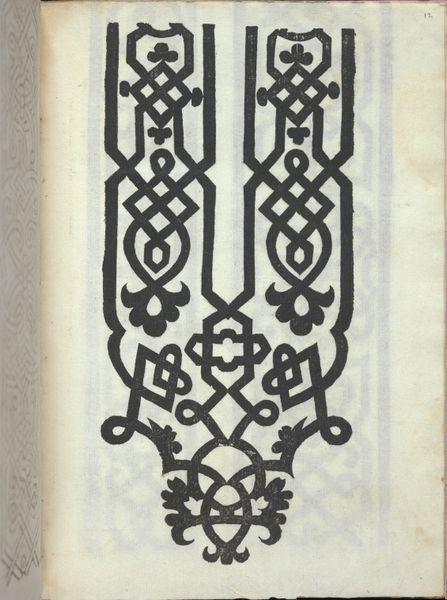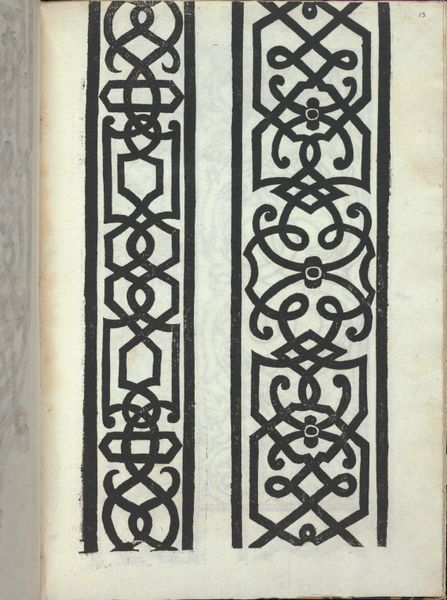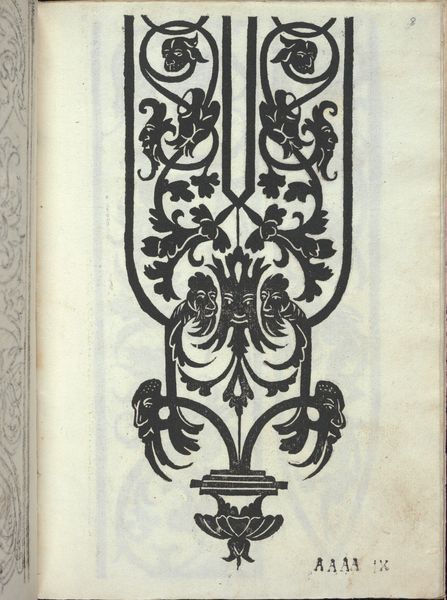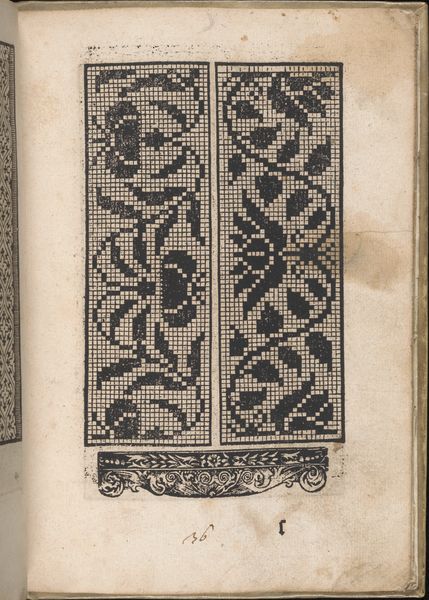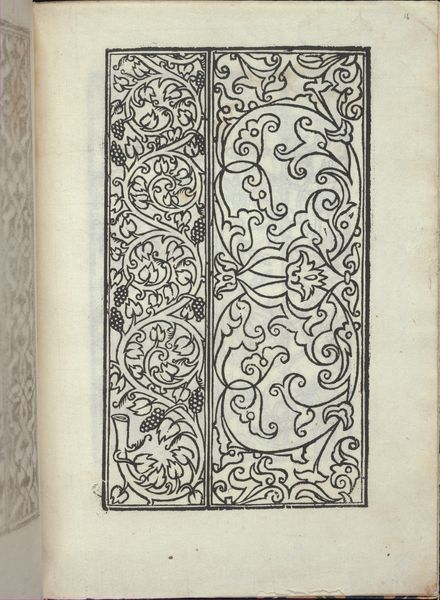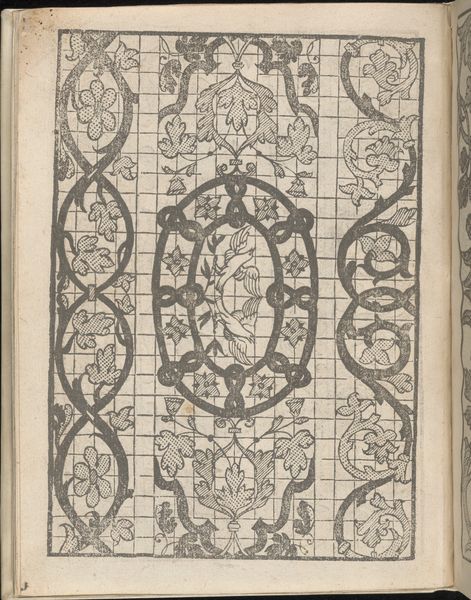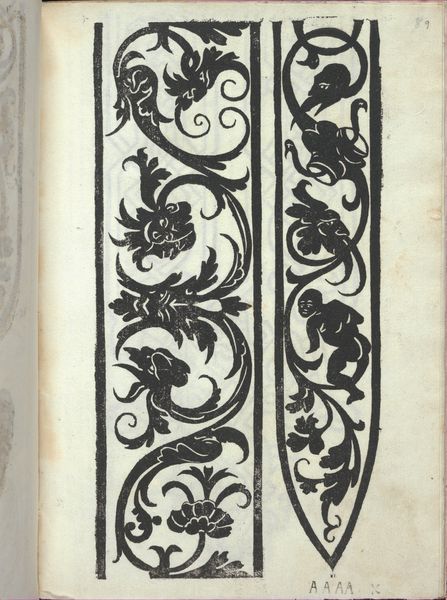
Libro quarto. De rechami per elquale se impara in diuersi modi lordine e il modo de recamare...Opera noua, page 10 (recto) 1532
0:00
0:00
drawing, print
#
drawing
#
medieval
# print
#
old engraving style
#
geometric
#
line
#
decorative-art
Dimensions: Overall: 8 3/8 x 5 7/8 x 3/16 in. (21.2 x 14.9 x 0.5 cm)
Copyright: Public Domain
Alessandro Paganino made this woodcut, a page from a book of embroidery patterns, sometime between 1500 and 1550. These designs connect to the wider cultural context of the Italian Renaissance, a period when the production of luxury goods flourished. The image creates meaning through intricate, symmetrical patterns. The knots, arabesques, and floral motifs reflect both the influence of Islamic art on Italian design and the emphasis on elaborate ornamentation prevalent in elite culture. During this period, Venice was a major center for the printing and distribution of pattern books. These books served a vital function in disseminating designs and standardizing artistic practices, reflecting the growing commercialization of art. The existence of pattern books also demonstrates the institutional structure of art production at the time, where knowledge and techniques were codified and transmitted through formal channels. The designs may appear conservative, yet they also represent a progressive embrace of new technologies and the democratization of artistic knowledge. Historians use various resources like trade records, inventories, and surviving textiles to understand the role of embroidery in Renaissance society. Studying this helps us appreciate how art is contingent on its social and institutional context.
Comments
No comments
Be the first to comment and join the conversation on the ultimate creative platform.
